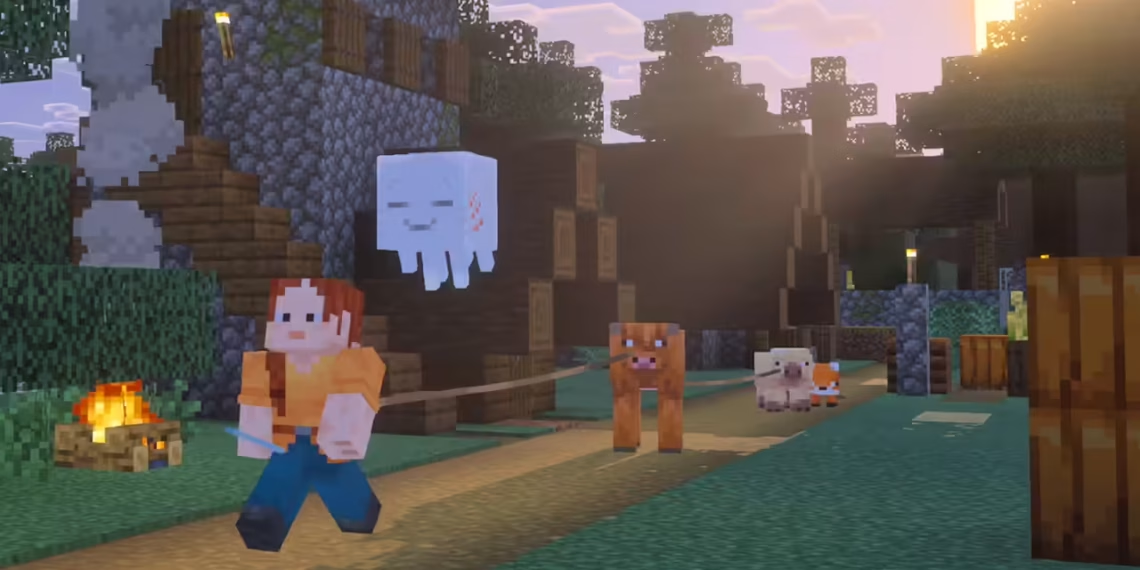Minecraft servers were once the beating heart of the sandbox gaming community, bringing millions of players together for epic adventures throughout the 2010s. However, these beloved community hubs are experiencing a significant decline in 2025, with player counts dropping and server closures becoming increasingly common. Understanding this shift reveals broader changes in gaming culture and industry dynamics.
Table of Contents
Minecraft Server Decline: Key Factors Overview
| Decline Factor | Impact Level | Description |
|---|---|---|
| Lack of Official Support | High | No official Mojang backing or framework |
| Rising Server Costs | Critical | Hosting, maintenance, and promotion expenses |
| Platform Disparity | High | Java vs. Bedrock edition fragmentation |
| EULA Policy Restrictions | Critical | Limited monetization opportunities |
| Gaming Trends Shift | High | Competition from Fortnite, Roblox, live services |
| Realms Competition | Medium | Official alternative reducing server appeal |
| Technical Complexity | Medium | Constant updates requiring maintenance |
| Community Fragmentation | Medium | Player base spread across platforms |
The Official Support Problem: Community vs. Corporate
One of the biggest issues plaguing the growth and consistency of Minecraft servers is the significant lack of official support from Mojang. Unlike Epic Games, which actively supports creators in Fortnite’s Creative mode, all current server mechanics and repositories like Bukkit were designed by players and the community without any official backing.

This community-driven approach, while fostering creativity, creates significant challenges:
- No Official Framework: Server owners must rely on third-party tools and community-maintained APIs
- Limited Scalability: Absence of official infrastructure makes growth difficult
- Technical Barriers: Each update potentially breaks community-made tools
- Marketing Disadvantage: No official listing or promotion system exists
For indie game developers and server owners, this represents a missed opportunity where official support could have sustained and grown the ecosystem.
Financial Pressures: The Hidden Cost of Community Building
Another factor affecting the growth of Minecraft servers is the rising costs of running and maintaining servers. Hosting is expensive, and expanding storage to accommodate new players and additional content takes a significant financial toll on server owners.
Cost Breakdown:
- Hosting Expenses: Monthly server costs that scale with player count
- Storage Requirements: Increasing demands for mods, worlds, and player data
- Maintenance Time: Constant upkeep requiring technical expertise
- Marketing Costs: Promoting servers requires additional investment
- Mod Updates: Each Minecraft update necessitates framework updates
These financial pressures have created an unsustainable model for many community-run servers, leading to closures and consolidation within the ecosystem.
Platform Wars: Java vs. Bedrock Fragmentation
While Java edition remains the most versatile platform for running Minecraft servers, recent trends indicate a majority shift to Bedrock edition. This migration is driven by accessibility—players on consoles, mobile phones, and handheld devices primarily use Bedrock.
The Bedrock Advantage:
- Device Compatibility: Available across more platforms
- Marketplace Integration: Official add-ons and content
- Realms Integration: Seamless private server creation
- Simplified Experience: Less technical knowledge required
Since Realms is popularly associated with Bedrock edition, most players tend to jump into private servers with friends rather than joining community-hosted servers. This shift has fundamentally changed how players approach multiplayer Minecraft.

EULA Restrictions: Killing the Revenue Model
Mojang’s EULA policy in recent years has ensured that pay-to-win servers are essentially nonexistent, but this well-intentioned change has unintended consequences. The rules severely limit how servers can generate revenue, eliminating many sustainable business models.
Revenue Challenges:
- Monetization Limits: Strict rules on what can be sold
- Pay-to-Win Ban: Eliminates many popular revenue streams
- Cosmetic-Only Sales: Limited appeal compared to gameplay advantages
- Donation Dependence: Unreliable income source for operations
With the lack of steady financial streams, it becomes increasingly difficult for server owners to sustain costs and maintain their communities.
The Gaming Landscape Evolution
Perhaps most significantly, changing trends in gaming have left traditional Minecraft servers feeling outdated. Popular server games like SkyWars, Hunger Games, and Factions are not as appealing as they once were, with gamers preferring live service titles offering more communication and expression opportunities.
Modern Gaming Preferences:
- Live Service Integration: Regular content updates and events
- Social Features: Enhanced communication and collaboration tools
- Trend Adaptation: Quick integration of popular culture and events
- Varied Gameplay: Multiple game modes within single platforms
Titles like Fortnite and Roblox offer significantly more game modes and collaborative opportunities, with arrays of collaborations with latest trends and events that make players gravitate toward these alternatives.
The Realms Factor: Official Competition
Realms offers a more seamless way for players to enjoy multiplayer worlds with official support and integration. This official alternative has overshadowed community servers by providing:
- Ease of Use: Simple setup without technical knowledge
- Official Support: Backed by Mojang with guaranteed uptime
- Cross-Platform Play: Seamless experience across devices
- Security: Protected environment without moderation concerns
For mobile gaming enthusiasts, Realms provides the multiplayer experience without the complexity of traditional servers.
What This Means for Minecraft’s Future
The decline of community servers represents a broader shift in gaming culture from community-driven experiences to official, curated content. While this trend offers benefits like better security and ease of use, it also reduces the creative freedom and community ownership that made Minecraft servers special.
Future Implications:
- Centralized Control: More official oversight of multiplayer experiences
- Reduced Innovation: Fewer experimental game modes and features
- Community Loss: Smaller, tight-knit gaming communities becoming rare
- Barrier Reduction: Lower technical barriers for casual players
Stay updated with the latest Minecraft news and gaming community insights on TechnoSports. For comprehensive coverage of gaming trends and community analysis, visit our gaming community section.
Sources: Official Minecraft | Minecraft Wiki | Mojang Studios
Frequently Asked Questions
Q: Are Minecraft servers completely dead in 2025?
A: No, Minecraft servers aren’t completely dead, but they’re experiencing significant decline. While major servers like Hypixel and some specialized communities still maintain healthy player bases, the overall ecosystem has shrunk considerably. Many medium and smaller servers have closed due to rising costs, EULA restrictions, and competition from official alternatives like Realms. The golden age of diverse, community-run servers has largely passed, though dedicated communities continue operating.
Q: Why don’t more players use Java edition servers if they’re more feature-rich?
A: The shift away from Java edition servers is primarily due to accessibility and convenience. Most new Minecraft players start on mobile, console, or other non-PC platforms using Bedrock edition, which offers limited server compatibility. Additionally, Bedrock’s integration with Realms provides an easier multiplayer experience without requiring technical knowledge about server addresses, mods, or Java-specific features. The lack of cross-platform mod/add-on sharing between Java and Bedrock has also deepened this divide.








